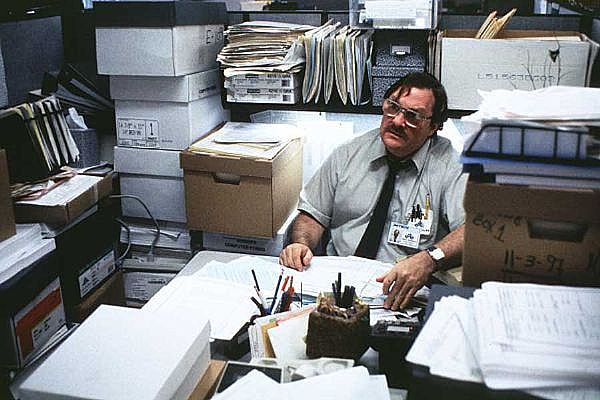 You run a business. Naturally, your brand and your profit margin are two of your biggest concerns. You think about a lot of other things too: efficiency, productivity, security, employee happiness, eco-friendliness, and more. But how much thought do you give to your office layout? If the answer is “not much”, then maybe you should think harder. Believe it or not, your office design could be the most important consideration of all because it has a direct and significant effect on all those other things. And if you are a person who pays attention to trends in the business world, you’ve probably noticed that a growing number of companies are quickly embracing the concept of open space office design—floor plans that emphasize large open spaces and minimize the use of smaller enclosed rooms such as private offices.
You run a business. Naturally, your brand and your profit margin are two of your biggest concerns. You think about a lot of other things too: efficiency, productivity, security, employee happiness, eco-friendliness, and more. But how much thought do you give to your office layout? If the answer is “not much”, then maybe you should think harder. Believe it or not, your office design could be the most important consideration of all because it has a direct and significant effect on all those other things. And if you are a person who pays attention to trends in the business world, you’ve probably noticed that a growing number of companies are quickly embracing the concept of open space office design—floor plans that emphasize large open spaces and minimize the use of smaller enclosed rooms such as private offices.
So just because other companies are jumping on the open office bandwagon, does that mean that you should be doing the same? The answer depends on the nature of your business and there are several factors to consider. For some firms, open office planning is a no-brainer. For certain others, it’s not a comfortable fit at all. Most companies fall somewhere in between, amenable to open design as a general plan but needing to scaling it back in certain places to accommodate special requirements of individual departments or business functions.
Where does your business fit in this spectrum? The question is a good one and one that is certainly worth asking. The best way to answer it is to first examine a few aspects of your business model and see how well each of them might be affected, positively or negatively, by an open office layout. Some of the key things you may want to look at are the following:
Your Corporate Culture
Research by Knoll Workplace Research examines the link between workspace design and human behavior and performance; and more specifically, some of the effects of open vs. closed environments as related to job satisfaction. One of Knoll’s conclusions is that workers who most fiercely value the private office are those who are accustomed to having worked in this type of setting for a period of time. The study goes on to point out that although this attitude may be more grounded in perception than reality, many workers in this category acutely feel that they must have an office of their own in order to be productive. So one of the lessons here is that the difficulty of migrating to an open environment can be proportional to the degree to which private offices are already ingrained into the culture of the organization. And this is one of the factors you should consider.
How Much Collaboration is needed
A related paper, also by Knoll, specifically addresses the relationship between work style and office design. Not surprisingly, the findings support the intuitive notion that “open space allows for better communication and exchange of information among co-workers. It is easier to ask each other questions in an open environment.” Correspondingly, the business models that best support ongoing collaboration (e.g., those that rely on creative environments) are ideal candidates for open office design. Some examples might be graphic design companies and ad agencies.
How Much of Your Business is sensitive or Thought-Intensive
For obvious reasons, privacy is not only desirable but also mandatory for certain business functions. Human resource employees fall quite naturally in this category, as they tend to deal with employee issues of a sensitive nature much of the time. In some financial firms or law firms, workers deal with clients whose confidentiality must be respected and quite often the only appropriate office setting for doing so is a closed one. The same can be true for any worker whose job requires a great deal of intense concentration. For people like these, a totally open environment may not be the best.
When you consider all of the above, you probably find your business somewhere in the middle and if so, you’ve got plenty of company. A lot of companies make the mistake of framing the open vs. closed debate in terms of “either-or” instead of “and.” To an increasing extent, businesses are beginning to realize that they can have both. This article describes how companies in the IT realm are forging hybrid solutions where the office design includes both open team space and private areas where workers can retreat when they need privacy to get work done or to make phone calls.
As a business owner, you’ve got a lot on your plate. And the right choice in office design is up there in importance. A lot of companies are hopping aboard the open office design train and are better off for doing so. Consider climbing aboard yourself but first be aware of how open space design will affect everything your business does and then you can come up with the smartest way of benefiting from it.
Dean Stier is Vice President of National Business Furniture, one of America’s leading providers of office desks, office chairs and other office furniture to businesses, government agencies and other institutions.



